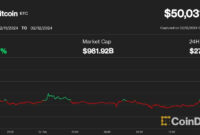What Is Uniswap (UNI) Cryptocurrency ? [Everything U Need to Know]
What Is Uniswap (UNI) ?
Uniswap is a protocol on Ethereum for swapping ERC20 tokens. Unlike most exchanges, which are designed to take fees, Uniswap is designed to function as a public good—a tool for the community to trade tokens without platform fees or middlemen. Also unlike most exchanges, which match buyers and sellers to determine prices and execute trades, Uniswap uses a simple math equation and pools of tokens and ETH to do the same job.
Uniswap is a protocol on Ethereum for swapping ERC20 tokens without the need for buyers and sellers to create demand.
The protocol facilitates automated transactions between cryptocurrency tokens on the Ethereum blockchain through the use of smart contracts. As of October 2020, Uniswap was estimated to be the largest decentralized exchange and the fourth-largest cryptocurrency exchange overall by daily trading volume. In March 2021, Uniswap was generating fees of approximately US$2–3 million daily for the liquidity providers who facilitate liquid markets for the cryptocurrencies being exchanged
Uniswap (UNI) is the primary token for the Uniswap DEX (decentralized exchange). Uniswap is the largest DEX in the world in terms of market capitalization at this time. It’s also the most popular Ethereum Dapp in the market. Uniswap plays a vital role in furthering innovation and adoption across the crypto market. As such, the platform experienced record growth this year. A recent Dune Analytics report puts the current market share of Uniswap up 63%.
Specifically, Uniswap is a protocol that allows buyers and sellers to exchange ERC-20 tokens in a trustless and permissionless manner. ERC-20 tokens are the most popular style of token currently. They reside on the Ethereum network and are interoperable between all ERC-20 compliant wallets, exchanges, and Dapps. These tokens have seen a sharp increase in use since DeFi (decentralized finance) has been on the rise.
DEX
As the world’s top DEX, Uniswap represents a fundamental shift in the market. DEXs offer traders a safer alternative to large centralized exchanges that operate in a custodial manner. These exchanges keep large amounts of users’ cryptocurrency in-network wallets. These wallets are prime targets for hackers seeking a hefty payday. Opposingly, DEXs are non-custodial. They never hold your funds directly. In this way, Uniswap inherits the benefits of blockchain and removes the drawbacks found in centralized platforms.
What Problems Does Uniswap (UNI) Solve?
Uniswap was built to tackle some of the toughest problems facing the market. Its decentralized nature helps to eliminate the power and control that has been accumulated by major exchanges such as Binance and Coinbase. Additionally, Uniswap plays a critical role in providing new businesses access to international liquidity.
Benefits of Uniswap (UNI)
Uniswap brings significant benefits to users and the market as a whole. Uniswap rose to stardom due to its open nature and simplistic interface. The trading window for Uniswap is basic. You can execute trades with a click and the entire network is remarkably flexible due to its characteristics.
What else is different about Uniswap?
Absolutely any ERC20 token can be listed on Uniswap–no permission required. Each token has its own smart contract and liquidity pool–if one doesn’t exist, it can be created easily.
Once a token has its own exchange smart contract and liquidity pool, anyone can trade the token or contribute to the liquidity pool while earning a liquidity provider fee of 0.3%. To contribute to a liquidity pool, you need an equal value of ETH and ERC20 tokens.
How are Uniswap tokens produced?
Whenever new ETH/ERC20 tokens are contributed to a Uniswap liquidity pool, the contributor receives a “pool token”, which is also an ERC20 token.
Pool tokens are created whenever funds are deposited into the pool and as an ERC20 token, pool tokens can be freely exchanged, moved, and used in other dapps. When funds are reclaimed, the pool tokens are burned or destroyed. Each pool token represents a user’s share of the pool’s total assets and share of the pool’s 0.3% trading fee.
Uniswap (UNI) token
The entire system utilizes UNI as its primary token. UNI is an ERC-20 token that is compatible with the Ethereum ecosystem. Currently, UNI is traded on various other popular exchanges, including a number of top-performing centralized exchanges like Coinbase Pro.
Uniswap Money Market
Uniswap recently ventured into the DeFi sector with its Money Market feature. This system allows users to post UNI LP tokens as collateral for a loan. These short term loans are repaid with interest. Specifically, liquidity providers earn a percentage of this interest for lending out their digital assets via the lending pools.
History of Uniswap (UNI)
The history of Uniswap (UNI) begins in 2016. It was at that time that Ethereum’s Founder, Vitalik Buterin, proposed the concept of a decentralized automated market maker. It was only a year before another well-known crypto developer took up the project. Hayden Adams made the concept a reality with some help from the ETH community. Specifically, he received various grants including a $100,000 grant from the Ethereum Foundation.
Uniswap V2 and V3
Though Uniswap launched back in November 2018, it wasn’t until relatively recently that the protocol began to see significant traction.
The release of Uniswap V2 in May 2020 saw a major upgrade that allows for direct ERC20 to ERC20 swaps, cutting Wrapped Ether (WETH) out of the equation where possible. Uniswap V2 also added support for incompatible ERC20 tokens like OmiseGo (OMG) and Tether (USDT), and added a host of technical improvements that make it more desirable to use.
As liquidity mining and yield farming platforms dramatically increased in popularity in 2020, Uniswap saw a corresponding surge in interest, since many DeFi platforms allow Uniswap liquidity providers to see an additional return on their LP tokens.
his, in combination with the 0.3% exchange fees distributed to liquidity providers—and the platform’s popularity as a launchpad for popular DeFi project tokens—has seen Uniswap rise the ranks to become one of the leading DeFi platforms by total value locked (TVL)—a measure of the total value of crypto assets locked up in the platform.
In May 2021, Uniswap V3 launched, with the latest iteration of the DEX adding a number of new features. First up is concentrated liquidity, which enables liquidity providers to allocate liquidity within a custom price range. That, in turn, means that traders don’t have to put as much capital on the line to achieve results.
Also CheckOut: Top 10 Cryptocurrencies in the world in 2021


